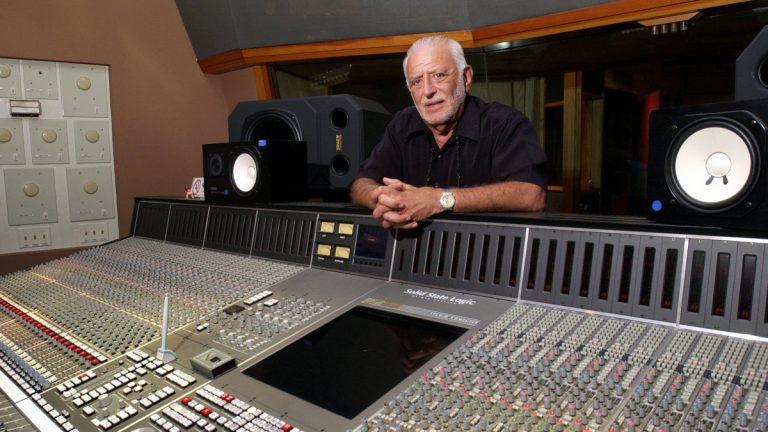
Joe Tarsia, now retired, is shown standing at the mixing board in Philadelphia’s Sigma Sound Studios in 2003. Sigma Sound, the source of the echoing, orchestral “Sound of Philadelphia” that topped the R&B charts in the 1970s changed hands last month after 35 years under founder and engineer Tarsia. (AP Photo/Mark Stehle)
Written by Alan Sharavsky, for NewsWorks/NPR on Tuesday, February 24, 2015
They paved paradise and put up a parking lot. Once again, Philadelphia fails to recognize its own history.
When I saw the obituary in a Philadelphia Business Journal email, treated like just another real estate transaction, I did what anyone would do after learning about a death in the family: I posted the link on Facebook. Instantly the mourners assembled to pay their respects, a group of artists and creative talent so distinguished that if you saw them together in a room, you’d swear you were at the Grammys.
A brilliant composer and world-class guitarist whose music you’ve heard on jingles for McDonald’s, numerous casinos, WABC in New York, and in TV shows like ”Dinner: Impossible.”
A gaffer and cameraman who’s lit the sets of your favorite TV dramas and was part of the crew when we shot with Vilmos Zsigmond, cinematographer for “Close Encounters of the Third Kind.”
An accomplished sound and video engineer who’s mixed hit records, indie albums, films scores, and has edited TV spots for Dockers, Century 21 as well sound for numerous feature films.
A world-renowned saxophonist who’s played with everyone from Burt Bacharach to Rod Stewart to Diana Ross to Elton John to Tony Bennett to Michael Bublé.
Writers, directors, marketing types, musicians — they all attended the virtual funeral, paying tribute to a Philadelphia institution. Sigma Sound is officially dead. The building was sold to yet another real estate developer to become yet another Center City apartment building.The place that gave birth to the world-famous “Philly Sound,” that midwifed disco and blue-eyed soul, that inspired groundbreaking talent like Hall and Oats, that helped launch The O’Jays, The Delphonics, Patti LaBelle, Len Barry and Teddy Pendergrass, is just another brick and mortar tombstone with a “sold” sign.
Now, you might think that a city devoted to respecting, revering and re-marketing its history would buy and preserve that Sigma building, turning it into a studio-museum to draw another breed of tourists, music zealots. You know — the way Nashville or Memphis or New Orleans or Detroit does.
You might imagine conventioneers by the thousands walking that one lone block from the Convention Center to hear rare rough mixes of “Me and Mrs. Jones,” “Could it be I’m Falling in Love,” “Betcha by Golly Wow,” and “If You Don’t Know me By Now.”
You might think they’d be spellbound while listening to tour guides tell the backstories of how David Bowie came to work with John Lennon on “Young Americans” and “Fame,” while standing in the very studio where they recorded those songs.
You might think that, but you would be wrong.
A cornerstone of Philadelphia history, a cornerstone of music history, will vanish as if it didn’t alter the very DNA of popular culture. It will disappear, and the city won’t skip a beat.
To be sure, I don’t know whether the administration and our charitable organizations attempted to buy the building and recognize it. Maybe that happened, and if so, thank you for trying. But I heard nothing about it.
As Will Rogers said, “I only know what I read in the papers.” As Joni Mitchell sang, “They paved paradise and put up a parking lot